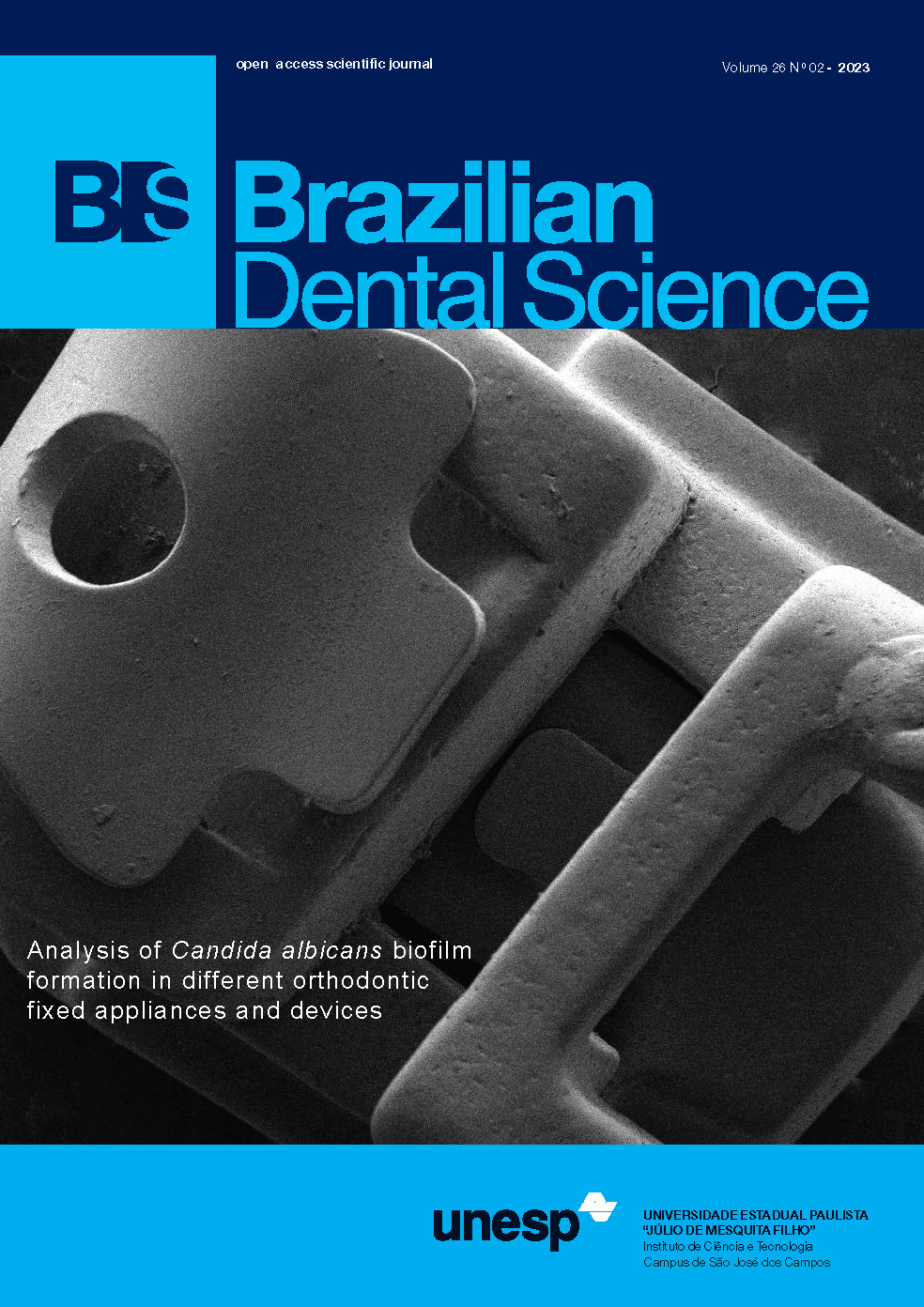Efficacy of ultrasonography in diagnosis of temporomandibular joint soft tissue injury induced by mandibular fractures: randomized clinical trial
DOI:
https://doi.org/10.4322/bds.2023.e3435Abstract
Objective: the aim of this study was to evaluate the efficacy of ultrasonography in diagnosis of tempromandibular joint soft tissue injury after mandibular osteosynthesis. Material and Methods: ten male patients (20 joint) with age ranged between 20-28 years were collected from those attending the outpatient clinic of Oral and Maxillofacial Surgery Department, Al-Kuwait Hospital, Sana’a University. Patients were divided into two groups according to the number of fracture line in the mandible. All patients were randomly assigned to diagnosis of the soft tissue changes of temporomandibular joint by either ultrasonography or magnetic resonance image preoperatively, after 2 weeks and 3 months postoperatively. Results: preoperatively, there was moderate agreement between ultrasonography and magnetic resonance image in the diagnosis of abnormal findings in both groups, the difference was not statistically significant. In group I, ultrasonography of the temporomandibular joint didn’t detect any abnormal findings after mandibular osteosynthesis, meanwhile, magnetic resonance image recorded abnormal findings 40% and 20% after 2 weeks and 3 months respectively. In group II, the diagnosis of abnormal findings was the same (80%) pre and postoperatively by using magnetic resonance image however, the percent of abnormal findings was reduced from 60% preoperatively to 40% postoperatively by using ultrasonography. Conclusion: the ultrasonographic image was not able to identify or diagnosis the disc position changes after indirect trauma. However, it had to some extent a role in the identification and diagnosis of effusion in temporomandibular joint.
KEYWORDS
Magnetic resonance imaging; Temporomandibular joint; Ultrasonography; Mandibular fractures; Injury.
Downloads
Published
How to Cite
Issue
Section
License
Brazilian Dental Science uses the Creative Commons (CC-BY 4.0) license, thus preserving the integrity of articles in an open access environment. The journal allows the author to retain publishing rights without restrictions.
=================




























